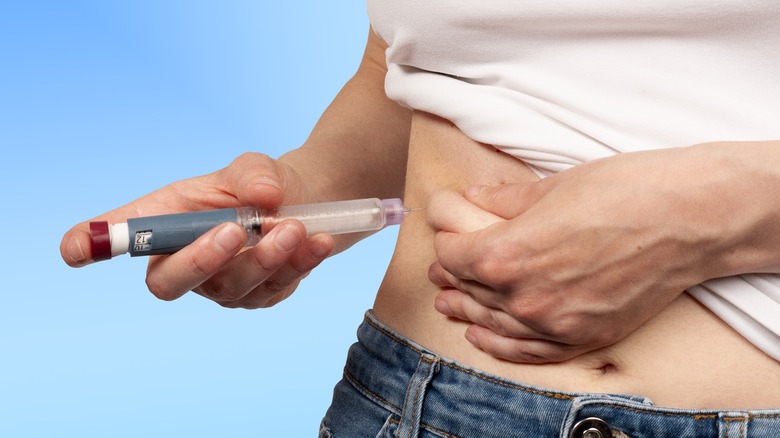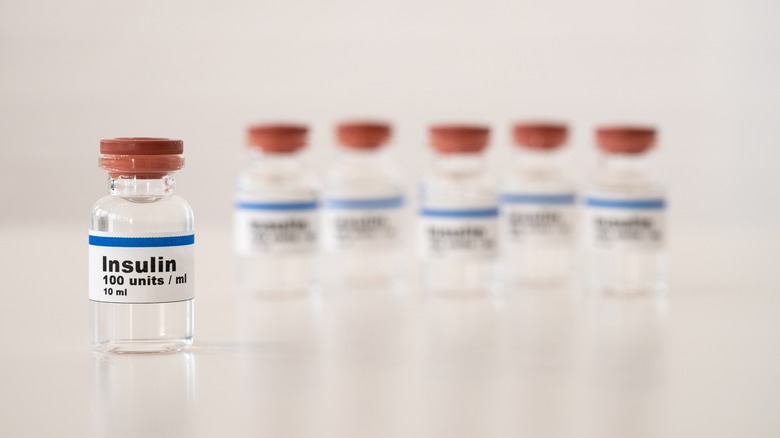How To Quickly Lower Your Blood Sugar
High blood sugar, also known as hyperglycemia, is a medical condition that occurs when you have a high amount of blood sugar (via the Cleveland Clinic). According to the source, hyperglycemia happens when your body has too little insulin or can't utilize produced insulin properly, which is very common in people with diabetes.
More than 37 million American adults have diabetes, and 1 in 5 people don't know they have diabetes, per the Centers for Disease Control and Prevention (CDC). Mortality rates from diabetes are high — it's the seventh leading cause of death in the United States. According to Wexner Medical, people with diabetes struggle to maintain a stable blood sugar level due to spikes in their blood glucose. Some mentioned factors include diet, activity level, illness, and fluid intake.
Hyperglycemia doesn't exhibit symptoms until a person's blood glucose rises above 180 to 200 milligrams per deciliter, says the Mayo Clinic. According to the clinic, the symptoms develop over a couple of weeks or days. Some early signs of high blood sugar include increased thirst, frequent urination, blurred vision, and unusual tiredness. Later symptoms of hyperglycemia include nausea and vomiting, dry mouth confusion, and abdominal pain. If you have hyperglycemia, you should consult your doctor for guidance.
In some cases, you can treat high blood sugar with at-home remedies. However, if the problem is serious, you might need urgent medical care, especially if the spike is accompanied by nausea, stomach pain, or confusion (via Healthline).
Insulin works the fastest
According to Healthline, two of the quickest ways to reduce blood sugar is by taking insulin as prescribed and exercising more often. It's also important to avoid high blood sugar triggers such as sugary food and drinks to prevent blood sugar spikes, says the National Health Services (NHS). Furthemore, try to stay hydrated through the day. Wexner Medical advises consuming 30 ounces of water for one hour for 2 to 4 hours. In another article, Healthline advises opting for low glycemic index (GI) foods. The GI measures how quickly carbs are broken down and absorbed in your body. GI ranks foods on a scale of 1 to 100. Foods lower than 55 can be classed as low GI. They include foods like lentils, barley, oats, and unsweetened Greek yogurt. The source also advises eating more fiber since it slows down the digestion of carbs and sugar.
Like many other medical situations, untreated high blood sugar levels can cause some long-term complications. These may include nerve damage, bone or joint problems, and damage to the blood vessels. Other urgent emergency complications include diabetic ketoacidosis and hyperosmolar hyperglycemia. According to the CDC, diabetic ketoacidosis develops when the body can't produce enough insulin. The symptoms can come in quickly — sometimes within 24 hours — and include frequent urination, weakness, confusion, and nausea (via the Mayo Clinic). Hyperosmolar hyperglycemic state is a condition that occurs when our body makes insulin but doesn't work properly. In such instances, blood glucose levels might become very high, often greater than 600 mg/dL, says the clinic.


